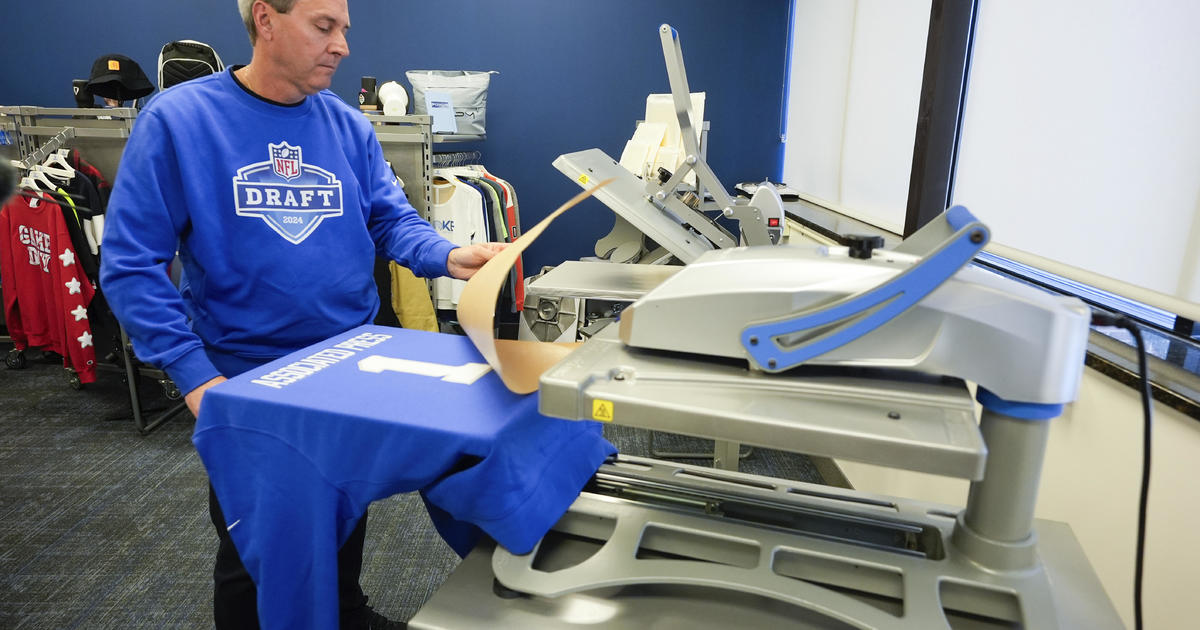Grand Valley's MAREC Readies For Third Season Of Offshore Wind Study
MUSKEGON -- A 'boatload of data' will be collected during the third and final research season of Grand Valley State University's Michigan Alternative and Renewable Energy Center's offshore wind assessment.
The research buoy that collects data for the study will be placed about seven miles offshore northwest of the Muskegon Channel in Lake Michigan within the next two weeks. It will remain in the lake until December, where it will continuously collect data about offshore wind characteristics, along with meteorological, marine and avian data, to help assess the viability of commercial-scale wind energy generation in the Great Lakes.
"Over the last two years, we've collected wind data in locations that were previously inaccessible," said Arnold Boezaart, director of MAREC. "This year, we're keeping the buoy closer to the shore to collect data that we predict will reinforce the data we collected from last year's season. We'll end up with a great representation of wind characteristics on Lake Michigan that can contribute to potential wind energy development."
The three-year study began in 2011, when the buoy went through a validation study on Muskegon Lake for two months, followed by two months of trials on Lake Michigan. During the second year of research in 2012, the buoy was placed 35 miles west of the Muskegon Channel at the mid-lake plateau in Lake Michigan and captured data at elevations between 90 and 175 meters above the lake surface.
The buoy uses laser pulse technology to capture wind measurements far above the buoy itself, the first time the technique has ever been used on a mobile research platform in open water.
"Throughout this study, the technology has demonstrated an ability to capture quality wind measurement data as much as 98 percent of the time," said Boezaart. "We are getting excellent results."
Students and faculty in Grand Valley's Padnos College of Engineering and Computing are analyzing data to determine the amount of power that could be created if wind turbines were installed in Lake Michigan.
"We literally have boatloads of data because it's recorded in one-second intervals," said Boezaart. "Grand Valley is providing important leadership in an area of science and technology, demonstrating groundbreaking technology, and generating unique and large data sets."
Project partners include researchers from Michigan Technological University, who are studying wind turbulence; Michigan Natural Features Inventory, a component of the Michigan State University Extension program who are studying bird and bat activity, and who confirmed for the first time ever last summer that bats do fly over the Great Lakes; and the University of Michigan, who are conducting research on large data sets.
Project staff will present findings from the study at the American Wind Energy Association's Windpower Conference and Exhibition — the largest annual wind energy event in the world — in Chicago in May. Monthly data summaries and other preliminary information collected from the study are available on ScholarWorks atscholarworks.gvsu.edu.
While federal grant funds end this year, Boezaart said other opportunities are being explored for the buoy to continue to capture data in different locations throughout the Great Lakes.
The primary objective of the Lake Michigan offshore wind assessment project is to gain a better understanding of offshore wind characteristics and dynamics, as well as potential wind energy. Other related physical, biological and environmental characteristics related to Great Lakes wind have been evaluated, including water quality characteristics, the water and air boundary layer, and bird and bat activity. Data collected will be used by NOAA's National Weather Service in preparation of its marine forecasts.
The research buoy, one of two such research platforms in the world, is a six-ton, 20-by-10 foot boat-shaped structure that can measure wind characteristics up to 175 meters above the water using advanced laser pulse and Doppler wind sensing technology in remote locations. It was constructed by Axys Technologies of British Columbia, Canada, and is equipped with a Vindicator laser wind sensor manufactured by Catch the Wind Inc. of Virginia.
For more information, contact Arnold (Arn) Boezaart, director of MAREC, at (616) 331-6900 or boezaara@gvsu.edu.



